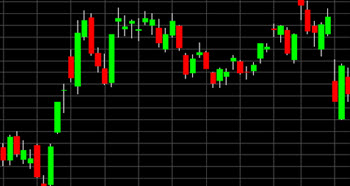In finance, technical analysis is a method where past market data is studied in an effort to correctly predict the future direction of prices. The study of historical prices and historical volume are two key aspects of technical analysis.
| Technical analysis is utilized for a wide range of financial instruments and other tradables, but on this site we will focus chiefly on technical analysis of company shares. |
Technical analysis is often used instead of or in conjunction with fundamental analysis, where fundamental analysis is based on the idea that the future value of company shares can be predicted by analyzing company characteristics, such as assets, liabilities, earnings, health, markets and competition.
The long-term profitability of technical analysis and fundamental analysis is disputed by adherents of the efficient-market hypothesis.
The technical analyst
 A stock trader using technical analysis as the basis for trading decisions is not focused on trying to find out some kind of intrinsic and correct “value” of a company. Instead, the trader is using historical trading data in an effort to spot trends and predict where the price will go in the future. Data concerning supply and demand in a market is utilized in an attempt to uncover trends and predict if they will continue or if a trend reversal is about to take place.
A stock trader using technical analysis as the basis for trading decisions is not focused on trying to find out some kind of intrinsic and correct “value” of a company. Instead, the trader is using historical trading data in an effort to spot trends and predict where the price will go in the future. Data concerning supply and demand in a market is utilized in an attempt to uncover trends and predict if they will continue or if a trend reversal is about to take place.
A technical analyst is studying the stock market and niches of the stock market, rather than studying the business ventures of the individual stock companies. Technical analysis can range from the study of the various shares (a-shares, b-shares, etc) of a specific company to attempts at gouging and interpreting global stock market changes.
Since many technical analysts rely heavily on charts and try to find patterns in charts, technical analysts are sometimes referred to as chartists.
Does it work?
Technical analysis is not a magic crystal ball capable of always accurately predicting the future, down to the smallest tick movement of a specific share on a certain stock exchange. What technical analysis can do is help us become aware of trends and use this awareness as one of several tools in our tool box for decision making. It can also help us become more attuned to how the market actually reacts to various events, rather than being stuck in a text-book mindset where we cling to rigid ideas of how the market should react to certain news.
This article was last updated on: August 28, 2016
